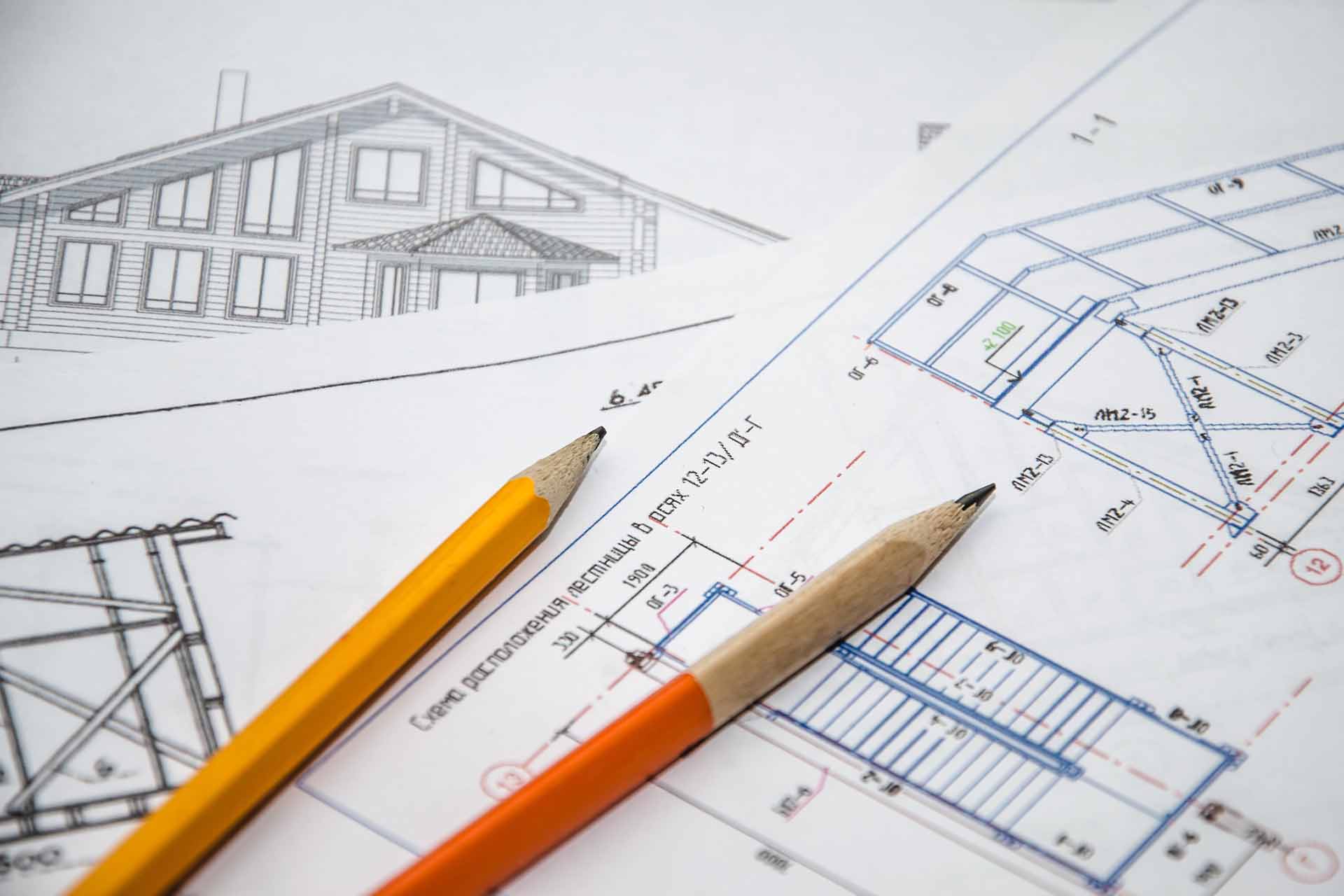Architect Insights on Balancing Form and Function
Architect Insights on Balancing Form and Function
Blog Article
Recognizing the Diverse Occupation Paths Available for Aspiring Architect
As a hopeful Architect, you have a world of profession courses waiting for you. Whether you're drawn to standard architecture or the nuances of sustainable layout, there's a niche that straightens with your interests.
Standard Style: Designing Structures and buildings
Standard design concentrates on designing structures and structures that mix performance with aesthetic charm. Your designs can reflect cultural heritage, showcasing regional customs while fulfilling modern needs.
You'll develop skills in preparing, model-making, and site analysis, allowing you to visualize and communicate your ideas properly. Engaging with customers, you'll require to comprehend their vision and equate it right into feasible designs.
Additionally, developing codes and sustainability methods are essential in your work, ensuring your structures are environmentally friendly and safe. As you grow in your career, you'll discover chances in household, business, or even reconstruction jobs, each offering special difficulties. Embracing typical design paves the way for a meeting occupation that pays homage to the past while forming the future.
Urban Planning: Shaping Areas and Public Spaces
As an aspiring Architect, you can play a crucial duty as a metropolitan planner, changing how neighborhoods function and interact. By utilizing area involvement techniques, you'll assure that locals have a voice fit their atmosphere. And also, integrating lasting design concepts will certainly help create spaces that not only satisfy today's demands but additionally protect the future.
Role of Urban Planners
While lots of may believe of designers as the single enthusiasts behind structures, urban coordinators play a vital role in forming the broader landscape of areas and public spaces. They assess land usage, zoning regulations, and area requires to produce lasting atmospheres that enhance top quality of life. By collaborating with numerous stakeholders, you'll help create parks, transport systems, and suburbs that advertise social communication and access. Urban organizers likewise concentrate on environmental considerations, guaranteeing that growths integrate environment-friendly spaces and assistance biodiversity. Your expertise in spatial design and neighborhood dynamics enables you to imagine future growth while maintaining social heritage. In this important function, you'll directly affect exactly how individuals experience their environments, making every task a possibility for favorable adjustment.
Area Interaction Approaches
Effective neighborhood engagement strategies are vital for metropolitan organizers to assure that the voices of residents are listened to and valued in the preparation process. To cultivate significant discussion, you should prioritize open discussion forums and workshops where community participants can express their concepts and issues. By proactively including and paying attention comments, you'll produce areas that show the neighborhood's demands, eventually leading to even more lasting and successful urban settings.
Lasting Design Concepts
When making metropolitan spaces, integrating sustainable design principles is essential for creating settings that thrive both ecologically and socially. You ought to begin by focusing on energy efficiency, using materials that minimize waste and promote recycling. Think about integrating environment-friendly areas, like parks and gardens, to improve biodiversity and enhance air quality. Promoting walkability and public transport can minimize reliance on vehicles, fostering a much healthier community.
Creating with water preservation in mind is additionally vital-- consider rain gardens and absorptive surface areas to handle stormwater. Including area participants throughout the planning procedure guarantees that the spaces you produce meet their requirements and motivate social interaction. By accepting these principles, you'll add to vibrant, sustainable metropolitan landscapes that benefit everybody.

Landscape Architecture: Producing Sustainable Outdoor Settings
As you check out landscape architecture, you'll uncover necessary style principles that develop stunning and practical outside spaces. Lasting techniques play an essential role in making sure these environments flourish while decreasing ecological effect. And also, you'll discover a selection of job chances that enable you to make a genuine difference in exactly how people interact with nature.
Layout Principles in Landscape
Recognizing design concepts in landscape architecture is crucial for developing sustainable exterior environments that integrate with nature. You'll require to contemplate aspects like range, equilibrium, and proportion to ensure your designs really feel cohesive and welcoming. Including indigenous plants not just enhances biodiversity however additionally minimizes water usage, making your landscape resistant. Consider the circulation of room and how individuals connect with it; paths and seating locations should invite exploration and leisure. Additionally, focus on seasonal changes, developing with products that enhance the surroundings year-round (Architect). By prioritizing sustainability and visual appeals, you can produce outside rooms that enhance the neighborhood and promote well-being. Embracing these concepts will certainly set a solid foundation for your career in landscape design.
Sustainable Practices Overview
Sustainable techniques in landscape architecture not only concentrate on looks but likewise focus on eco-friendly health and source preservation. You can design areas that advertise dirt health, such as exercising and making use of organic materials permaculture principles. Eventually, these techniques assure your layouts benefit both people and the environment for years to come.
Profession Opportunities Expedition
With a strong foundation in lasting methods, landscape design supplies a range of career courses that enable you to make a significant impact on the environment. Urban planners often team up with landscape designers to create environment-friendly spaces in city settings, boosting city livability. If you're enthusiastic regarding education, think about coming to be a landscape architecture educator, motivating future generations.
Sustainable Layout: Concentrating On Eco-Friendly Practices
As read you explore your profession in architecture, accepting environment-friendly practices can establish you apart in a competitive area. Lasting design concentrates on creating structures that lessen ecological effect while improving passenger wellness. By incorporating sustainable products, energy-efficient systems, and sustainable structure techniques, you'll add to a greener future.
Beginning by acquiring knowledge of green certifications like LEED or BREEAM, which can strengthen your credentials. Think about just how natural light, ventilation, and thermal performance can optimize design. Work together with engineers and environmental experts to introduce solutions that decrease waste and save sources.
Don't fail to remember the value of area involvement-- interesting neighborhood stakeholders can influence styles that integrate with the setting. As customers increasingly prioritize sustainability, your proficiency in green practices will not only draw in jobs however likewise meet your interest for responsible architecture. Embrace this vital element of the occupation, and enjoy your career thrive.
Historic Preservation: Protecting and Restoring Social Heritage
While you start on your building trip, think about the necessary function of historic preservation in maintaining our cultural heritage. This field focuses on the defense and reconstruction of substantial structures, websites, and structures that tell the stories of our past. By taking part in historical conservation, you'll assist protect the architectural tradition that shapes community identification.
As a historical conservation Architect, you'll assess historical significance and analyze the condition of structures. You'll work very closely with preservationists and historians to ensure authentic reconstruction methods are employed. This occupation path allows you to mix creativity with study, enabling you to make options that respect initial materials and workmanship.
Your work not only adds to sustainability by reusing existing buildings however also promotes a feeling of pride within neighborhoods. Embracing this course will certainly assist you come to be a guardian of history, protecting the stories and visual appeals that improve our lives.
Interior Design: Enhancing Indoor Spaces
Historical conservation and interior style both share a commitment to improving the constructed environment, but they concentrate on different elements. While historical conservation emphasizes preserving a framework's cultural and historical value, interior design absolutely nos in on optimizing indoor areas for capability and appearances.
As a hopeful Architect, you'll locate that indoor architecture allows you to blend imagination with technical skills. You'll create rooms that not just look excellent but also promote comfort and effectiveness. This area entails recognizing exactly how light, color, and materials engage within a room, affecting mood and functionality.
You'll work with different tasks, from household homes to industrial offices, making certain that each environment satisfies the needs of its occupants. By prioritizing user experience, you can transform interiors right into practical and inspiring areas, making a considerable effect on exactly how people engage with their surroundings. Accept the opportunity to enhance interior settings and form the means individuals work and live.
Industrial Design: Combining Functionality With Appearances
Commercial style plays a necessary function in creating items that seamlessly mix aesthetics with capability, making sure that what you use everyday is not only aesthetically straight from the source attractive but additionally functional. As a hopeful Architect, you might immerse on your own in this field, concentrating on creating every little thing from furnishings to consumer electronic devices. Your work entails comprehending customer needs, materials, and producing procedures, enabling you to develop ingenious options that improve day-to-day experiences.
In commercial design, you'll commonly team up with producers, designers, and marketers, making sure that your layouts are not only stunning yet also feasible. You'll learn to stabilize kind and feature, prioritizing usability without sacrificing design. By honing your skills in mapping out, 3D modeling, and prototyping, you'll be well-appointed to bring your ideas to life. This occupation course offers a dynamic atmosphere where creativity meets functionality, making it a fulfilling selection for engineers thinking about forming the items of tomorrow.
Frequently Asked Inquiries
What Educational Certifications Do I Required to End Up Being a Designer?
To come to be a designer, you'll require an expert level in design, commonly a Bachelor's or Master's. Furthermore, you'll have to finish an internship and pass the Architect Registration Examination to exercise legitimately.
Are There Certification Demands for Various Architectural Profession Paths?
Yes, there're qualification demands for various building paths. Architect. You'll require to pass examinations, complete teaching fellowships, and in some cases go after specialized training, depending on your picked focus, like landscape style, urban layout, or historic conservation
What Software Application Skills Are Crucial for Architects Today?

Just How Can I Gain Practical Experience While Examining Architecture?
You can obtain sensible experience by interning at building firms, joining style competitors, volunteering for community projects, or collaborating with classmates on real-world assignments. These possibilities boost your skills and construct important links in the market.
What Work Opportunities Exist Outside Typical Architecture Firms?
You can discover various task opportunities outside standard architecture firms, like urban planning, indoor style, landscape architecture, building monitoring, realty growth, and even duties in sustainability consulting. Each offers special challenges and benefits.
Whether you're attracted to conventional style helpful resources or the nuances of sustainable layout, there's a niche that lines up with your passions.When developing city spaces, integrating lasting layout concepts is essential for producing atmospheres that thrive both ecologically and socially.As you discover landscape architecture, you'll discover necessary layout principles that create useful and beautiful outdoor rooms.Recognizing design principles in landscape architecture is necessary for developing lasting exterior settings that integrate with nature.In commercial layout, you'll often collaborate with engineers, marketing experts, and producers, making certain that your styles are not only stunning but also viable.
Report this page